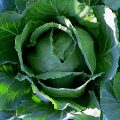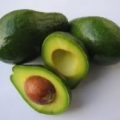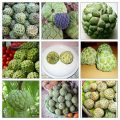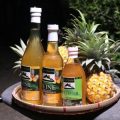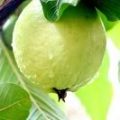The pineapple also known botanically as Ananas comosus plant is a terrestrial herb 2 1/2 to 5 ft (.75-1.5 m) high with a spread of 3 to 4 ft (.9-1.2 m); a very short, stout stem and a rosette of waxy, straplike leaves, long-pointed, 20 to 72 in (50-180cm) 1ong; usually needle tipped and generally bearing sharp, upcurved spines on the margins.

Four major varieties of pineapples
• Smooth Cayenne
• Queen Victoria
• Red Spanish
• Pernambuco
Several varieties of pineapple are available in the Philippines. One is the Smooth Cayenne or Hawaiian, which is the heaviest, most popular, and best for canning. The Queen or African Queen or Formosa is the sweetest. The Native Philippine Red or Red Spanish is cone-shaped and considered of medium quality. It is also grown for its fiber. The Cabezona is the largest, measuring approximately 8-12 inches long when fully matured. Other varieties include the Buitenzorg or Java, Sugar, Loaf and Abakka.
Climate
The pineapple is a tropical or near tropical plant limited (except in greenhouses) to low elevations between 30°N and 25°S. A temperature range of 65°-95°F (18.33-45°C) is most favorable, though the plant can tolerate cool nights for short periods. Prolonged cold retards growth, delays maturity and causes the fruit to be more acid. Altitude has an important effect on the flavor of the fruit. Between 4500 and 5700 ft (1371-1738 m) the flavor is most suitable for canning.
The pineapple is drought tolerant and will produce fruit under yearly precipitation rates ranging from 25 to 150 in (650-3,800 mm), depending on cultivar and location and degree of atmospheric humidity.
Soil
The best soil for pineapple culture is a well-drained, sandy loam with a high content of organic matter and it should be friable for a depth of at least 2 ft (60 cm), and pH should be within a range of 4.5 to 6.5. Soils that are not sufficiently acid are treated with sulfur to achieve the desired level. The plant cannot stand waterlogging and if there is an impervious subsoil, drainage must be improved. Pure sand, red loam, clay loam and gravelly soils usually need organic enrichment. Filter presscake from sugar mills greatly enhances plant vigor, fruit yield, number of slips and suckers.
Propagation
Most beginners start pineapple growing by planting the tops of shop bought pineapples. However, it’s a slow way to grow pineapples. Tops take at least 24 months to flower, and then it takes another six months for the fruit to mature.
Suckers and slips grow up and fruit a lot quicker. Suckers are little plantlets that grow between the leaves of the mature pineapple. Slips are the tiny plantlets that grow at the base of the fruit on the fruit stalk.
Culture
The land should be well prepared at the outset because the pineapple is shallow-rooted and easily damaged by post-planting cultivation. Fumigation of the soil contributes to high quality and high yields.
Planting: In small plots or on very steep slopes, planting is done manually using the traditional short-handled narrow-bladed hoe, the handle of which, 12 in (30 cm) long, is used to measure the distance between plants. Crowns are set firmly at a depth of 2 in (5 cm); slips and suckers at 3 1/2 to 4 in (9 10 cm). Butts, after trimming and drying for several days, are laid end-to-end in furrows and covered with 4 in (10 cm) of soil.
Double-rowing has been standard practice for many years, the plantlets set 10 to 12 in (25 30 cm) apart and staggered, not opposite, in the common rows, and with 2 ft (60 cm) between the two rows. An alley 3, 5 1/2 or 6 ft (.9, 1.6 or 1.8 m) wide is maintained between the pairs, allowing for plant populations of 17,400, 15,800 or 14,500 per acre (42,700, 37,920 or 33,800 per ha) respectively. Close spacing gives highest total crop weight—e.g.. 18,000 plants/acre = 28.8 tons (43,200 plants/ha = 69.12 tons). However, various trials have shown that overcrowding has a negative effect, reducing fruit size and elongating the form undesirably, and it reduces the number of slips and suckers per plant.
Some plantings are mulched with bagasse. In large operations, asphalt-treated paper, or black plastic mulch is regarded as essential. It retards weeds, retains warmth in cool seasons, reduces loss of soil moisture, and can be laid by machines during the sterilization and pre-fertilization procedures. Mulch necessitates removal of basal leaves of crowns, slips and suckers and the use of a tool to punch a hole at the pre-marked planting site for the insertion of each plantlet. The mulch is usually rolled onto rounded beds 3 1/4 ft (1 m) wide.
Mechanical planting: Research on the potential of machines to replace the hard labor of planting pineapples was begun in Hawaii in 1945. A homemade device was first employed in Queensland in 1953. Early semi-mechanical planters were self propelled platforms with driver and two men who made the holes in the mulch and set the plants in place. With a 2-row planter, 3 men can set 7,000 plants per hour of operation. Frequent stops are necessary to reload with planting material. With improved equipment, mechanical planting has become standard practice in large plantations everywhere. The most sophisticated machines have attachments which concurrently apply premixed fertilizer and lay a broad center strip of mulch, set the plantlets along each edge, and place a narrow strip along the outer sides. The only manual operation, apart from driving, is feeding of the plantlets to the planting unit. With this system, up to 50,000 plants have been set out per day.
Fertilization: Nitrogen is essential to the increase of fruit size and total yield. Fertilizer trials in Kenya show that a total of 420 lbs N/acre (471.7 kg/ha) in 4 equal applications during the first year is beneficial, whereas no advantage is apparent from added potassium and, phosphorus. Puerto Rican studies have indicated that maximum yields are achieved by urea sprays supplying 147 lbs N/acre (151 kg/ha). In Queensland, total yield of mother plants and ratoons was increased 8% by urea spraying. Normal rate of application is 3 1/2 gals (13.3 liters) per 1,000 plants. On acid Bayamon sandy clay in Puerto Rico, addition of magnesium to the fertilizer mix or applying it as a spray (300 lbs magnesium sulfate per acre—327 kg/ha) increased yield by 3 tons/acre (7 tons/ ha). On sloping, stony clay loam high in potassium, Queensland growers obtained high yields of ‘Smooth Cayenne’ from side dressings of NPK mixture 5 times a year. On poor soils, nitrogen and potassium levels of the plants may become low toward the end of the crop season. This must be anticipated early and suitable adjustments made in the application of nutrients. Potassium uptake is minimal after soil temperatures drop below 68°F (20°C). On fine sandy loam in Puerto Rico, the cultivar ‘P.R. 1-67’ performed best with 13-3-12 fertilizer applied at the rate of 1.5 tons/acre (3.74 tons/ha). In this expertmeet, 13,403 plants/acre (32,167/ha) produced 9,882 fruits/acre (23,717/ha), weighing 31.28 tons/acre (75 tons/ha). In Venezuela, 6,250 medium-size fruits per acre (15,000 fruits/ha) is considered a very good crop.
Fruit weight has been considerably increased by the addition of magnesium. Fruit size and total yield have been enhanced by applying chelated iron with nitrogen; also, where chlorosis is conspicuous, by accompanying nitrogen with foliar sprays of 0.10% iron and manganese.
Some growers thin out suckers and slips to promote stronger growth of those that remain.
Irrigation: Irrigation is desirable only in dry seasons and should not exceed 1 in (2.5 cm) semi-monthly.
Weed Control: Manual weeding in pineapple fields is difficult and expensive. The use of paper or plastic mulch and timely application of approved herbicides are the best means of preventing weed competition with the pineapple crop but the use of coir dust has a deleterious effect on the crop, delaying or preventing flowering.
Flower Induction: Pineapple flowering may be delayed or uneven, and it is highly desirable to attain uniform maturity and also to control the time of harvest in order to avoid overproduction in the peak periods. In 1874 in the Azores it was accidentally discovered that smoke would bring pineapple plants into bloom in 6 weeks. The realization that ethylene was the active ingredient in the smoke led to the development of other methods.
As far back as 1936, compressed acetylene gas, or a spray of calcium carbide solution (which generates acetylene) were employed to expedite uniform blooming. Some growers have merely deposited calcium carbide in the crown of each plant to be dissolved by rain. A more advanced method is the use of the hormone, a-naphthaleneacetic acid (ANA) or B naphylacetic acid (BNA) which induce formation of ethylene. In recent years, B-hydroxyethyl hydrazine (BOH) came into use. Treatment is given when the plants are 6 months old, 3 months before natural flowering time. The plants should have reached the 30 leaf stage at this age.
Spraying of a water solution of ANA on the developing fruit has increased fruit size in ‘Smooth Cayenne’ in Hawaii and Queensland. In West Malaysia, spraying ‘Singapore Spanish’ 6 weeks after flowering with Planofix, an ANA-based trade product, delayed fruit maturity, increased fruit size, weight and acidity. Similar results have been seen after hormone treatment of ‘Cayenne Lisse’ on the Ivory Coast.
Trials with ‘Sugarloaf’ in Ghana showed calcium carbide and BOH equally effective on 42-to 46-week-old plants, and Ethrel performed best on 35-to 38-week-old plants. ‘Sugarloaf’ seems to respond 10 days earlier than ‘Red Spanish’.
Ethrel, or the more recently developed Ethephon, applied at the first sign of fruit ripening in a field will cause all the fruit to ripen simultaneously. It brings the ratoons into fruit quickly. There is a great saving in harvesting costs because it reduces the need for successive pickings.
Plants treated with naphthaleneacetic acid produce long, cylindrical, pointed fruits, maturing over an extended period of time, ripening first at the base while the apex is still unripe. Ethylene treatment results in a square shouldered, shorter fruit maturing over a shorter period and ripening more uniformly.
Pests
Nematodes (Rotylenchulus, Meloidogyne, Pratylenchus, Ditylenchus, Helicotylenchus, and other genera) cause stunting and degeneration in pineapple plants unless soil is fumigated.
Mealybugs (Pseudococcus brevipes and P. neobrevipes) attack leaf bases and cause wilt. The leaves turn orange-brown and wither due to root rot. Prevention requires spraying and dusting to control the fire ants (Solenopsis spp. ) which carry the mealybugs from diseased to healthy plants. Control is difficult because there are many weeds and other local plants acting.as mealybug hosts. Some success was achieved in Florida in combatting mealybugs with the parasitic wasp, Hambletonia pseudococciaa Comp., though the general use of insecticides limits the activity of the wasp.
The pineapple mite, or so-called red spider (Dolichote-tranychus (or Stigmacus) floridanus (Banks) also attacks leaf bases and is troublesome during prolonged droughts, heavily infesting the slips. The pineapple red scale (Diaspis bromeliae) has been a minor pest in Florida. Since 1942 this scale has spread to many pineapple districts in southeastern Queensland, with occasional serious infestations. Natural predators afford about 40% control. The palmetto beetle (Rhynchophorus cruentatus), which feeds on palm logs, enters the bud and lays eggs in young fruits and the fruit stalk.
The sap beetle (Carpophilus humeralis) is one of the main enemies of pineapple fruits in Puerto Rico, Hawaii and Malaysia and is especially attracted to fruits affected by gummosis. Populations have been diminished by sanitary procedures and growing of cultivars resistant to gummosis, and chemical control is being evaluated.
In Brazil, larvae of the large moth, Castnia licus, and of the butterfly, Thecla basilides, damage the fruit. The latter is a problem in other parts of tropical America also and in Trinidad.
Cutworms eat holes in the base of the immature fruit. Fruit fly larvae do not pupate in ‘Smooth Cayenne’ but new hybrids lack resistance and may require treatment.
In New South Wales, poison baits are employed to combat fruit damage by crows, rats and mice. Rats may eat the base of the stem and destroy ratoons and suckers. Rabbits in winter eat the leaves as high as they can reach.
Diseases
In Queensland, top rot and root rot are caused by the soil fungi Phytophthora cinnamomi and P. nicotianae var. parasitica which are most prevalent in prolonged wet weather in autumn and winter. Improved drainage helps reduce the risk and monthly spraying with fungicide gives good control. P. cinnamomi may also cause rot in green fruit on ratoons. These diseases are largely prevented by the use of paper or plastic mulch on raised beds.
Base rot is caused by the fungus Ceratocystis paradoxa, especially where drainage is poor. The imperfect form (conidial state) of this fungus, known as Thielaviopsis paradoxa, causes butt rot in planting material, also soft rot or breakdown of fruits during shipment and storage. If 1/4-ripe ‘Red Spanish’ fruits are kept at temperatures between 44.6° and 46.4°F (7°-8°C) while in transit, soft rot will not develop.
Fusarium spp. in the soil are the source of wilt. Black heart is a physiological disorder not visible externally, usually occuring in winter particularly in locations where air flow is inadequate. Highest incidence in West Africa has been reported in midsummer. It begins as “endogenous brown spot” at the base of the fruitless close to the core. Later, affected areas merge. It has been attributed to chilling or low light intensity from dense planting or cloudiness. It can be controlled by one-day heat treatment at 90° to 100°F (32°-38°C) before or after refrigerated storage. In 1974, the microorganism Erwinia chrysanthemi was identified in Malaya as the cause of bacterial heart rot and fruit collapse.
Yellow spot virus on leaves is transmitted by Thrips tabaci Lind. Black speck and water blister are mentioned among other problems of the pineapple.
A condition called Crookneck is caused by zinc deficiency. It occurs mainly in plants 12-15 months old but is also frequent in suckers. The heart leaves become curled and twisted, waxy, brittle, and light yellowish-green. Sometimes the plant bends over and grows in a nearly horizontal position. Small yellow spots appear near the edges of the leaves and eventually merge and form blisters. Later, these areas become grayish or brownish and sunken. Treatment is usually a 1% solution of zinc sulfate. Many growers use a combined spray of 10% urea. 2% iron sulfate and 1% zinc sulfate. If burning occurs. the proportion of urea should be changed to 5%. Excessive use of urea for this or any other purpose can lead to leaf tip dieback and yellowing of older leaves due to the biuret content in urea.
Copper deficiency is evident in concave leaves with dead tips and waxiness without bloom on the underside.
Sunburn or sunscald develops when fruits fall over and expose one side to the sun, though ‘Abacaxi’ may sunburn even when erect. Affected fruits soon rot and become infested with pests. They must be cut as soon as noticed and safely disposed of where they will not contaminate other fruits. Dry grass, straw, excelsior or brown paper sleeves may be placed over fruits maturing in the summer to prevent sunburn.
Harvesting
It is difficult to judge when the pineapple is ready to be harvested. The grower must depend a great deal on experience. Size and color change alone are not fully reliable indicators. Conversion of starch into sugars takes place rapidly in just a few days before full maturity. In general, for the fresh fruit market, the summer crop is harvested when the eye shows a light pale green color. At this season, sugar content and volatile flavors develop early and steadily over several weeks. The winter crop is about 30 days slower to mature, and the fruits are picked when there is a slight yellowing around the base. Even then, winter fruit tends to be more acid and have a lower sugar level than summer fruit, and the harvest period is short. Fruits for canning are allowed to attain a more advanced stage. But overripe fruits are deficient in flavor and highly perishable.
Some people judge ripeness and quality by snapping a finger against the side of the fruit. A good, ripe fruit has a dull, solid sound; immaturity and poor quality are indicated by a hollow thud.
In manual harvesting, one man cuts off or breaks off the fruits (depending on the cultivar) and tosses them to a truck or passes them to 2 other workers with baskets who convey them to boxes in which they are arranged with the stems upward for the removal of bracts and application of a 3% solution of benzoic acid on the cut stem of all fruits not intended for immediate processing. The harvested fruits must be protected from rain and dew. If moist, they must be dried before packing. All defective fruits are sorted out for use in processing.
If the work is semi-mechanized, the harvesters decrown and trim the fruits and place them on a 30-ft conveyor boom which extends across the rows and carries the fruits to a bin on a forklift which loads it onto a truck or trailer. Some conveyors take the fruits directly into the canning factory from the field. In most regions of the world, pineapples are commonly marketed with crowns intact, but there is a growing practice of removing the crowns for planting. For the fresh fruit market, a short section of stem is customarily left on to protect the base of the fruit from bruising during shipment.
Total mechanical harvesting is achieved by 2 hydraulically operated conveyors with fingers on the top conveyor to snap off the fruit, the lower conveyor carrying it away to the decrowners. After the fruit has been conveyed away, the workers go through the field to collect the crowns (where they have been left on the tops of the plants) and place them on the conveyors for a trip to the bins which are then fork lifted and the crowns dumped into a planting machine.
Life of plantation
In Florida, ‘Abakka’ fields were maintained for 2, 3, or 4 crops. Some plantings of ‘Red Spanish’ were prolonged for 25-26 years. In current practice, after the harvesting of the first crop, workers trim off all but 2 ratoons which will bear fruit in 15-18 months. Perhaps there may be a second or third ratoon crop. Then the field is cleared to minimize carryover of pests and diseases. The method will vary with the interest in or practicality of making use of by products. In Malaya, fields have been cleared by cutting the plants, leaving them to dry for 12-16 weeks, then piling and burning. Spraying with kerosene or diesel fuel makes burning possible in 9 weeks. Spraying with Paraquat allows burning in 3 weeks but does not destroy the stumps which take 3-5 months to completely decay while new plants are set out between them.
Field practices will differ if pineapples are interplanted with other crops. In Malaya, pineapples have been extensively grown in young rubber plantations. In India and Sri Lanka the pineapple is often a catchcrop among coconuts. Venezuelan farmers may interplant with citrus trees or avocados.
Storage
Cold storage at a temperature of 40°F (4.44°C) and lower causes chilling injury and breakdown in pineapples. At 44.6-46.4°F (7-8°C) and above, 80-90% relative humidity and adequate air circulation, normal ripening progresses during and after storage. At best, pineapples may be stored for no more than 4-6 weeks. There is a possibility that storage life might be prolonged by dipping the fruits in a wax emulsion containing a suitable fungicide. Irradiation extends the shelf life of half- ripe pineapples by about one week.
Sources:
http://www.hort.purdue.edu/newcrop/morton/pineapple.html
http://www.tropicalpermaculture.com/pineapple-growing.html
http://www.pineapples.co.za/content%20page/cultivar.aspx
http://bicol.da.gov.ph/Opportunities/pineapple%20profile/topic2.html

